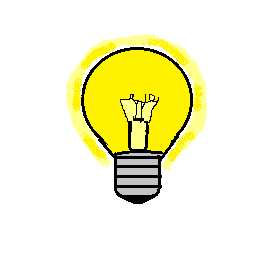In 1878 and 1879, both Englishman Sir Joseph Swan and American Thomas Edison were able to create lighting device, called a light bulb. Both light bulbs of the mid 1800s were effective enough then that the structure of the light bulb has not changed much.
A glass light bulb will contain several parts in order to create energy. When the light bulb has a power supply, such as being screwed into a lamb, an electric current will flow within the circuit, and then light is emitted. In this picture from HowStuffWorks, you can see that there is a (n):
- Electrical Foot Contact
- Insulation
- Screw Thread Contact
- Glass Mount
- Bulb
- Tungsten Filament
- Inert Gas
- Support Wires
In order for anything to work electrically, an Electrical Circuit needs to be established first. The parts of the light bulb work together in order to complete the electrical circuit, creating an electric source for the light bulb to emit light. At the base of the light bulb there are two metal contacts, an electrical foot and screw thread contact, which are connected to two stiff wires. These stiff wires are the tungsten filaments that are held by the glass mount, in the middle of the light bulb. In between you have the Insulation, which from our last blog, you learned is to keep the electrical current within the metal contacts and prevents it from escaping onto other materials. Finally, within the glass bulb is an inert gas, such as nitrogen or argon.
 All of these parts of a glass light bulb are important in order to have a functioning light bulb. In fact, there are about 12 billion light bulbs made worldwide, according to wsj.com! I wonder if Englishman Sir Joseph Swan and American Thomas Edison ever wondered how essential the light bulb would grow to be, hundreds of years later.
All of these parts of a glass light bulb are important in order to have a functioning light bulb. In fact, there are about 12 billion light bulbs made worldwide, according to wsj.com! I wonder if Englishman Sir Joseph Swan and American Thomas Edison ever wondered how essential the light bulb would grow to be, hundreds of years later.

